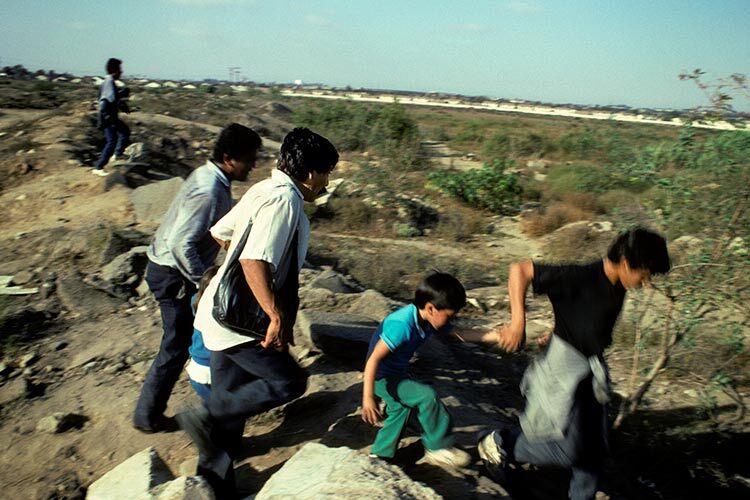Since the pandemic, with the arrival of digital nomads and the increase in foreign tourists in Mexico, the discussion about gentrification has intensified, but do we really know what it is and what are its consequences?
“The term has become very generalized and overused,” says Luis Salinas, researcher at the Institute of Geography of the National Autonomous University of Mexico (UNAM).
According to the expert, this can lead people to confuse its meaning, which could strip the word of the critical force with which it should be used.
What Is Gentrification?
To understand what gentrification is, let’s go back in history. The concept was coined by sociologist Ruth Glass, who compiled several academic essays, from various disciplines, that described the physical, economic, demographic, commercial and cultural transformations of some central London neighborhoods in 1964. In the introduction she wrote:
“One by one, many of London’s working-class neighborhoods have been invaded by the middle, upper and lower classes. Once this process of ‘gentrification’ begins in a district, it continues rapidly until all or most of the original working-class occupants are displaced and the entire social character of the district changes.”
Although the term has evolved and has been studied from new perspectives, the background of criticism that Glass gave it is preserved.
For Salinas, gentrification is “a physical and social transformation of a space, which has to do with investment in from the real estate and commercial sector, or with public or private interventions.”
Physical changes may include the appearance of new buildings, the increase in green areas -such as parks- or the installation of lighting on streets that did not have it. Socially, a demographic restructuring is observed, with the arrival of a population with greater economic and cultural capital that displaces the original population.
Gentrification Myths
Many of us think that seeing foreigners on the streets of Mexico City means there is gentrification and that they are to blame for the fact that housing and food prices have increased so much in recent years.
“It is a xenophobic discourse that has spread very strongly, but it is not a question of nationality,” says Salinas.
Another myth is that gentrification can be defined from a visual point of view: “If a neighborhood is suddenly filled with designer stores, cafes and people with beards, that is not enough to say that it exists,” says Ernesto López-Morales, researcher and professor of the San Sebastián University, Chile.
One way to know it exists is to measure how much the costs of access to housing -rent or sale- have increased and if there have been displacements associated with that increase.
If prices have skyrocketed, above the annual adjustment for inflation, and the original population who lived there have left because they can no longer afford it, then there is.
On social networks it has also been reported that tourist destinations seek to eliminate local customs to please visitors, calling it gentrification. A very famous case was when on the beaches of Sinaloa, a Mexican northern state, its residents were asked to stop playing banda music.
“This phenomenon is known as the fading of the popular, where certain traditions or cultural aspects become invisible or lost, or, on the other hand, are commodified,” says Salinas.
This can be observed in cases such as the one in Sinaloa or when a drink or food that used to be consumed by people with low resources -such as pulque- starts being sold in exclusive stores with high prices.
“They are negative processes that can accompany gentrification, but they are not the same,” says Salinas.
The consequences of gentrification
For experts, learning to differentiate gentrification from other social phenomena is a way of affirming the critical stance with which they believe it should be used, since it has negative consequences for society.
The main problem is the displacement of the local population, forced to leave their home and move somewhere affordable.
Sometimes, this supplanting is not physical, but social: “They may not be forced to leave the space, but there is an expulsion and an uprooting from the activities of their neighborhood,” says López Morales.
With the increase in prices for housing, food or recreational activities, people lose access to different places or are excluded from neighborhood gatherings.
In Latin America, those who are displaced are often racialized individuals, who live in poverty or have low economic, educational or cultural resources.
Although gentrification is particular to the specificities of each neighborhood, city or country, there are common features. “You no longer see the people who used to walk in the streets and another type of dynamic is established, more aimed at consumption and not so much at coexistence,” says Salinas.
Is There Anything Good In Gentrification?
According to researchers, sometimes the State is the main promoter of gentrification, justifying the arrival of large real estate or commercial companies under the discourse of urban regeneration.
This may lead some people to think that it is not always negative, since there are physical improvements to the space and more jobs can be generated.
Given this perspective, Salinas invites us to question who these improvements are for and who will be able to enjoy them. “I study gentrification from a critical perspective,” he says. “For me, it is clearly negative.”
Allowing the entry of companies or developers, such as Airbnb or BeGrand, without any regulation has economic motivations, where entrepreneurs -who may be foreign or local- seek to profit.
“No one builds for free, but in these cases there is an excessive profit and the value of use is lost,” says López-Morales.
Can gentrification be stopped?
Discussing the impacts of this phenomenon is important to find ways to avoid it. “It is not about reaching a romanticism where nothing changes, cities are alive and will transform over time,” says Salinas. “What should exist is the possibility for all sectors of the population to enjoy them.”
For now, there are no clear measures to stop it, with some isolated efforts in different countries.
Ideally, there should be new public policies that regulate the increase in prices for access to housing, food and essential products. Also, the State should prioritize the well-being of all sectors of the population, not just that of the wealthiest.
“Mexican institutions are not concerned or looking to stop it,” says Salinas. “It’s all about attracting capital, regardless of the consequences.”
For now, an organized and informed society seems like the most viable solution to stop its repercussions. “Gentrification is not something cities should be proud of, but something they should be concerned about,” says López-Morales.
Were you interested in this story? Do you want to publish it? Contact our content editor to learn more marianaleonm@tec.mx













